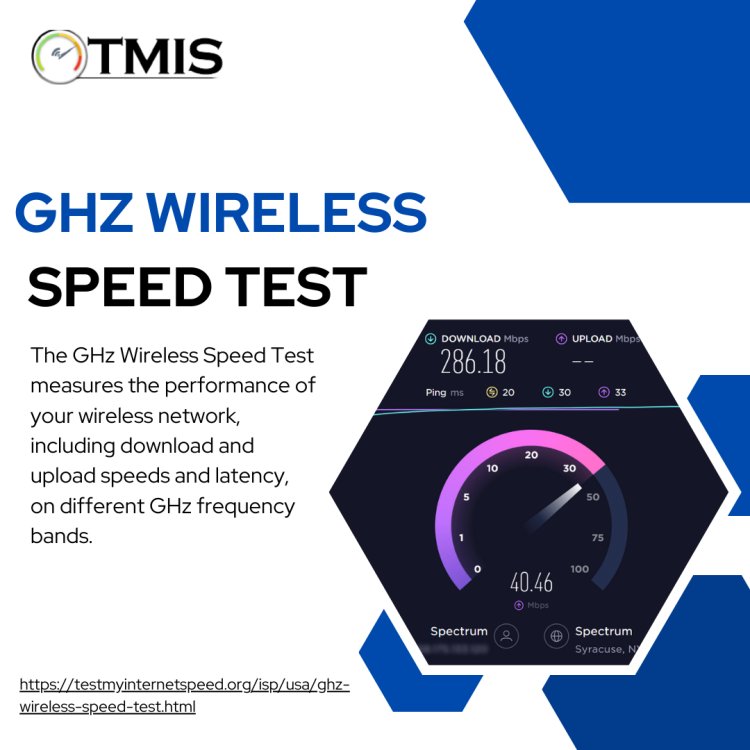Comparing GHz Wireless Speed Test Results for 2.4GHz vs 5GHz Bands
When setting up a Wi-Fi network on a dual-band router, understanding the differences between the 2.4GHz and 5GHz bands is crucial. Each band offers unique advantages, and a GHz wireless speed test can help you determine which band is best suited for your needs.
Share this Post to earn Money ( Upto ₹100 per 1000 Views )

When setting up a Wi-Fi network on a dual-band router, understanding the differences between the 2.4GHz and 5GHz bands is crucial. Each band offers unique advantages, and a GHz wireless speed test can help you determine which band is best suited for your needs.
Understanding the Basics
- 2.4GHz Band: This frequency band is widely used and offers broader coverage, meaning it can penetrate walls and obstacles more effectively. However, it's also more prone to interference because many devices, such as microwaves and older wireless devices, operate on this band.
- 5GHz Band: The 5GHz band provides faster data rates, making it ideal for high-bandwidth activities like streaming HD videos or online gaming. However, it has a shorter range and is less effective at penetrating solid objects.
Performing a GHz Wireless Speed Test
To compare the performance of these two bands, you can conduct a GHz wireless speed test on each one. Here's how:
- Connect to the 2.4GHz Band: Start by connecting your device to the 2.4GHz band. Run the speed test to measure download and upload speeds as well as latency.
- Connect to the 5GHz Band: Next, switch your device to the 5GHz band and perform the same speed test. Record the results for comparison.
Analyzing the Results
- Speed: Typically, the 5GHz band will show higher download and upload speeds due to its ability to handle larger amounts of data. The 2.4GHz band may have slower speeds, especially if there is a lot of interference from other devices.
- Range: The 2.4GHz band may provide better results at a distance or through walls, while the 5GHz band might show a drop in speed as you move farther away from the router.
- Interference: In a GHz wireless speed test, you might notice more fluctuations in speed on the 2.4GHz band if there are many devices or networks operating nearby.
Which Band Should You Use?
- For General Browsing: The 2.4GHz band is often sufficient for basic tasks like web browsing and checking email, especially in larger homes where coverage is a priority.
- For High-Bandwidth Activities: If you're streaming HD videos, playing online games, or performing other data-intensive tasks, the 5GHz band is usually the better choice due to its higher speeds and lower latency.
- Environment Considerations: In crowded areas with many Wi-Fi networks, the 5GHz band can offer a clearer signal with less interference.
Conclusion
By conducting a GHz wireless speed test on both the 2.4GHz and 5GHz bands, you can make an informed decision on which band to use based on your specific needs. While the 5GHz band generally offers superior speed, the 2.4GHz band excels in range and penetration. Understanding these differences ensures that you get the most out of your dual-band router, optimizing your network for both coverage and performance.

















